Mongolia
Between sky and earth…
Naadam

Naadam racers. ©2012 Robert Prior
The origins of the annual Naadam Festival lie in the quriltai, the great clan meetings that were the social events of the medieval Mongol season. In the days of Genghis Khan, tribesmen gathered from the furthest corners of the land to settle matters of leadership and pasturage, of war and peace, as well as that most contentious of issues — who had the fastest horses.
Stanley Stewart, In the Empire of Genghis Khan
This was a small naadam, more authentic than the national one in Ulaanbaator. It reminded me a bit of a small town fair: a celebration for the people putting it on, rather than a celebration expected to bring in tourists and TV cameras (and partly if not mainly staged for their benefit). There were other tourists there, but not that many and it was easy to keep them out of the frame. It was harder to keep cars out, and I didn't really succeed, so many of my shots have modernity in the background.
We were there early enough for the opening ceremonies, and managed to see a bit of everything. In hindsight, I could have got much better pictures, but I spent a lot of time just soaking up the surroundings, trying to understand what I was seeing, so missed a lot of opportunities. On the other hand, I have a lot of memories that aren't confined to a frame, so my regret is mainly that I'll have write the memories up to share them — and I'm not that good a writer!
We were there early enough for the opening ceremonies, and managed to see a bit of everything. In hindsight, I could have got much better pictures, but I spent a lot of time just soaking up the surroundings, trying to understand what I was seeing, so missed a lot of opportunities. On the other hand, I have a lot of memories that aren't confined to a frame, so my regret is mainly that I'll have write the memories up to share them — and I'm not that good a writer!
Participants and Spectators

Modern Mongolia. ©2012 Robert Prior

Mongolian Fashion. ©2012 Robert Prior
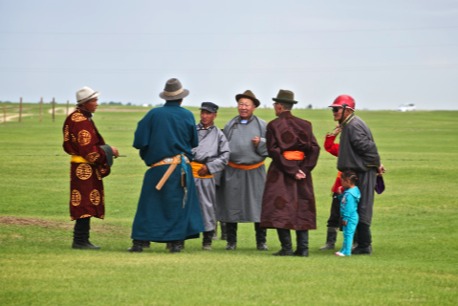
Mongolian Men. ©2012 Robert Prior
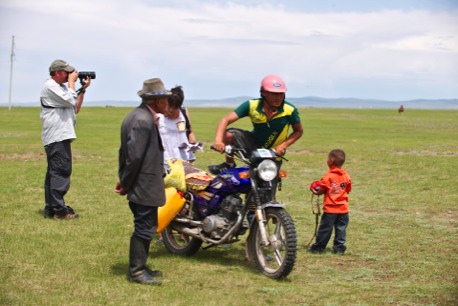
Modern Mongolians. ©2012 Robert Prior
One of the things I noticed about Mongolian fashion is that it's the men who still wear traditional costumes as an everyday matter, while the women generally seemed to wear Western clothing. I'm not certain what this says about their society.
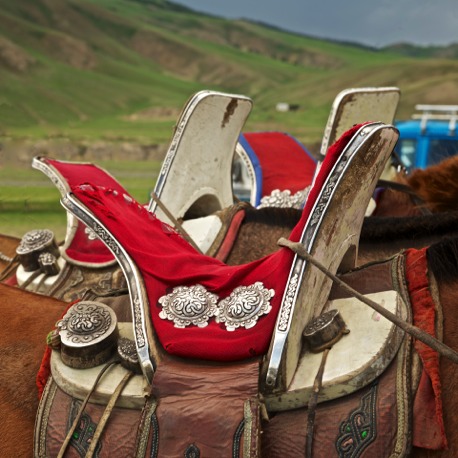
Mongolian Saddle. ©2012 Robert Prior
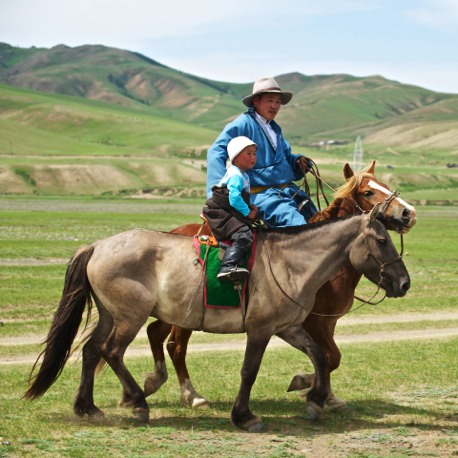
Learning to ride… ©2012 Robert Prior
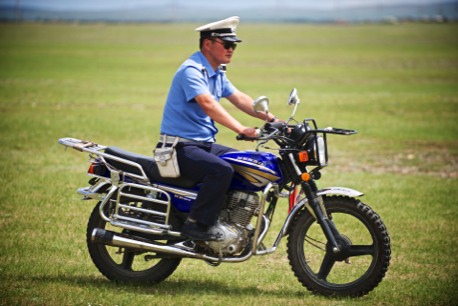
Mounted police. ©2012 Robert Prior
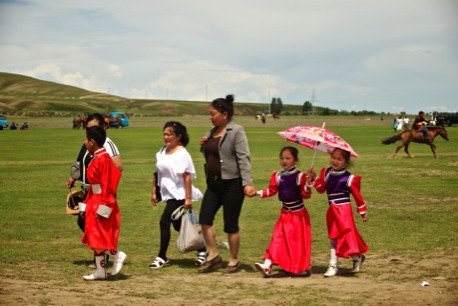
Ready for the big day. ©2012 Robert Prior
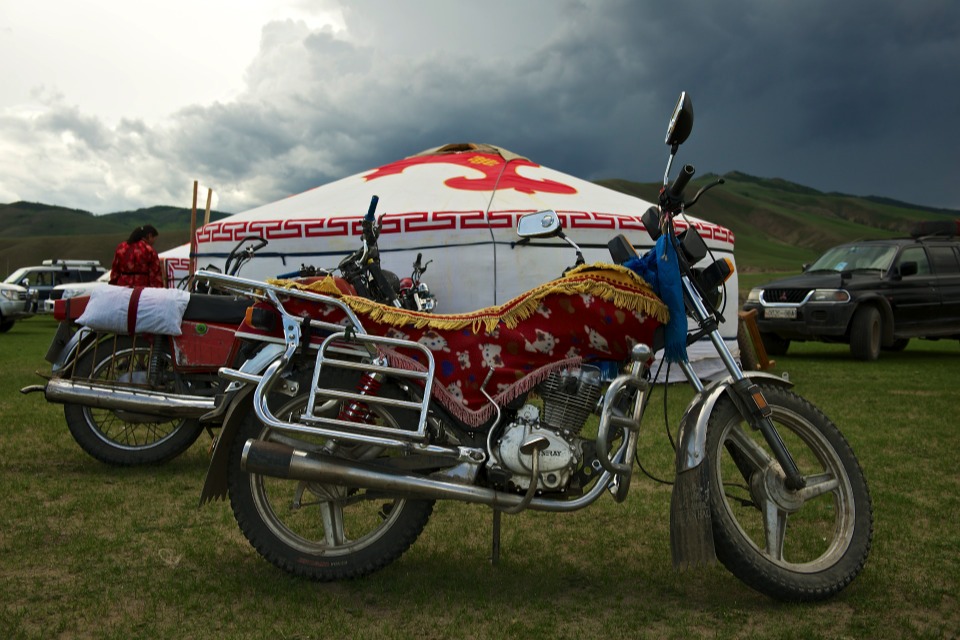
Mongolian Motorbike. ©2012 Robert Prior
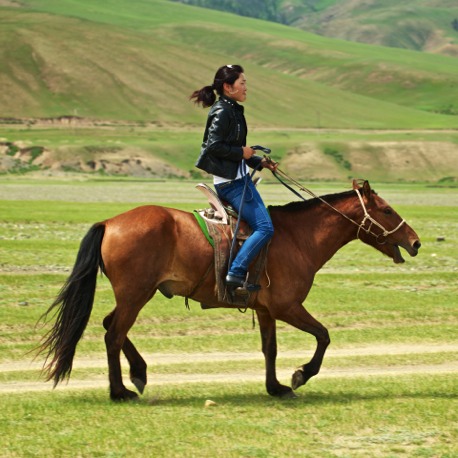
Mongolian Transportation. ©2012 Robert Prior
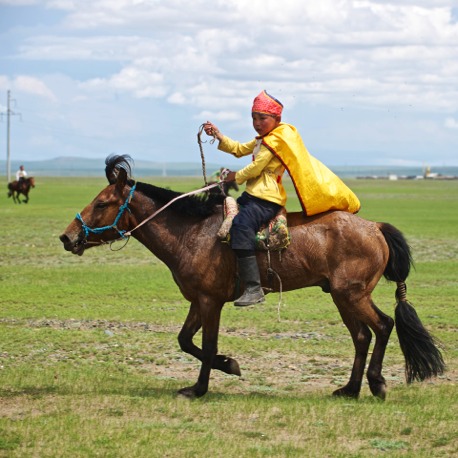
Caped Rider. ©2012 Robert Prior
Opening Ceremonies
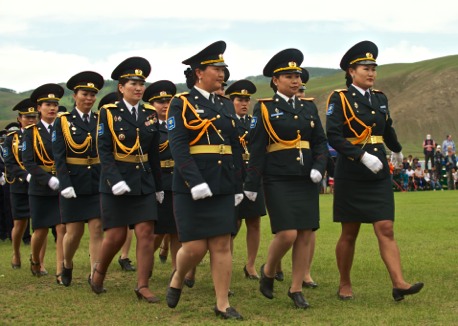
Mongolian Army. ©2012 Robert Prior
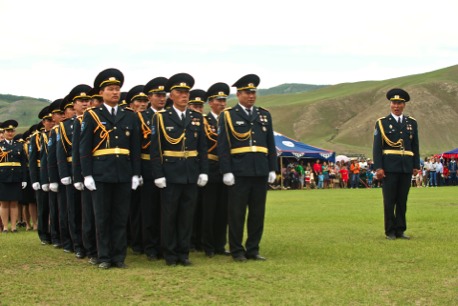
Mongolian Army. ©2012 Robert Prior
Wrestling
I asked an old fellow next to me the reason for the curious design of the jackets — long sleeves but an open front that left the chest bare. ‘Keeps the women out,’ he muttered. In Outer Mongolia women wrestlers are much feared; anyone who has had dealings with the stewardesses of Mongol Air will understand why. The annals of Mongolian wrestling are full of stories in which devious viragos disguised their sex, entered the wrestling competition and destroyed all the best heavyweights… The idea of the open-fronted jacket is that it allows the more alert judges to spot a woman straight away and hustle her out of the competition before she causes any damage.
Stanley Stewart, In the Empire of Genghis Khan
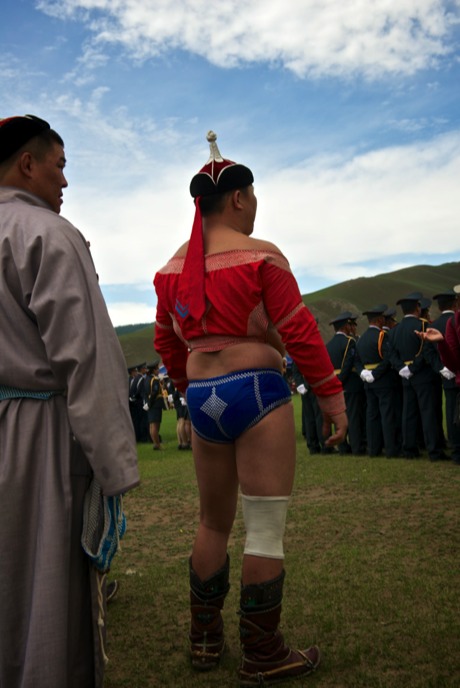
Mongolian Wrestler. ©2012 Robert Prior
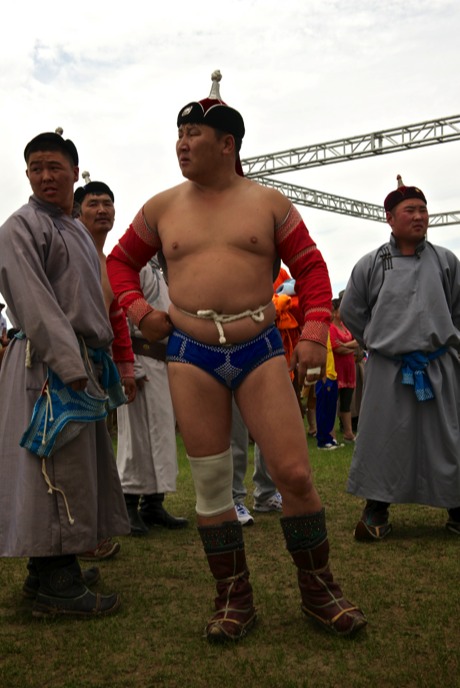
Mongolian Wrestler. ©2012 Robert Prior
The wrestling itself was quite boring: two large chaps hugging each other without moving for long periods of time, then suddenly one of them hitting the ground. It might well be a lot more exciting when you know the moves, but to an uninformed outsider this wasn't worth watching — unlike the horse race.
Archery
Lorem ipsum dolor sit amet, sapien platea morbi dolor lacus nunc, nunc ullamcorper. Felis aliquet egestas vitae, nibh ante quis quis dolor sed mauris. Erat lectus sem ut lobortis, adipiscing ligula eleifend, sodales fringilla mattis dui nullam. Ac massa aliquet.
Lorem ipsum dolor sit amet, sapien platea morbi dolor lacus nunc, nunc ullamcorper. Felis aliquet egestas vitae, nibh ante quis quis dolor sed mauris. Erat lectus sem ut lobortis, adipiscing ligula eleifend, sodales fringilla mattis dui nullam. Ac massa aliquet.
Horse Race
Lorem ipsum dolor sit amet, sapien platea morbi dolor lacus nunc, nunc ullamcorper. Felis aliquet egestas vitae, nibh ante quis quis dolor sed mauris. Erat lectus sem ut lobortis, adipiscing ligula eleifend, sodales fringilla mattis dui nullam. Ac massa aliquet.
Lorem ipsum dolor sit amet, sapien platea morbi dolor lacus nunc, nunc ullamcorper. Felis aliquet egestas vitae, nibh ante quis quis dolor sed mauris. Erat lectus sem ut lobortis, adipiscing ligula eleifend, sodales fringilla mattis dui nullam. Ac massa aliquet.
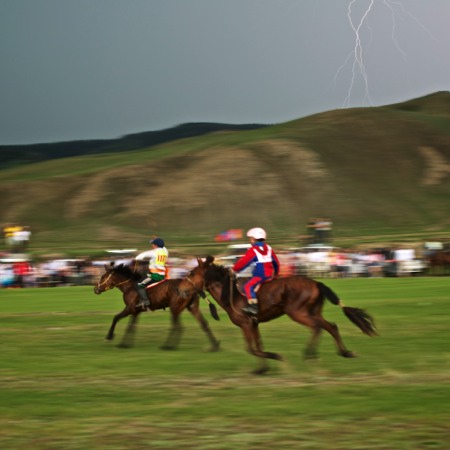
Racing the thunder. ©2012 Robert Prior
Wikipedia Article
Naadam (Mongolian: Наадам, lit. "games") is a traditional type of festival in Mongolia. The festival is also locally termed "eriin gurvan naadam" (эрийн гурван наадам) "the three games of men". The games are Mongolian wrestling, horse racing and archery and are held throughout the country during the midsummer holidays. Women have started participating in the archery and girls in the horse-racing games, but not in Mongolian wrestling.
In 2010, Naadam was inscribed on the Representative List of the Intangible Cultural Heritage of Humanity of UNESCO.
Overview
The biggest festival (Naadam of the Country) is held in the Mongolian capital Ulaanbaatar during the National Holiday from July 11 – 13, in the National Sports Stadium. Other cities and towns across Mongolia and those with significant Mongolian populations in China, have their own, smaller scale Naadam celebrations, often taking place a few days before the national celebration. Naadam begins with an elaborate introduction ceremony featuring dancers, athletes, horse riders, and musicians. After the ceremony, the competitions begin.
Naadam is the most widely watched festival among Mongols, and is believed to have existed for centuries in one fashion or another. Naadam has its origin in the activities, such as military parades and sporting competitions such as archery, horse riding and wrestling, that followed the celebration of various occasions. Now it formally commemorates the 1921 revolution when Mongolia declared itself a free country.
Another popular Naadam activity is the playing of games using shagai, sheep anklebones that serve as game pieces and tokens of both divination and friendship. In the larger Nadaam festivals, tournaments may take place in a separate venue.
Wrestling
Mongolian traditional wrestling is an untimed competition in which wrestlers lose if they touch the ground with any part of their body other than their feet or hand. When picking pairs, the wrestler with the greatest fame has the privilege to choose his own opponent. Wrestlers wear two-piece costumes consisting of a tight shoulder vest (zodog) and shorts (shuudag). Only men are allowed to participate.
Each wrestler has an "encourager" called a zasuul. The zasuul sings a song of praise for the winning wrestler after rounds 3, 5, and 7. Winners of the 7th or 8th stage (depending on whether the competition features 512 or 1024 wrestlers) earn the title of zaan, "elephant". The winner of the 9th or 10th stage, is called arslan, "lion". In the final competition, all the "zasuuls" drop in the wake of each wrestler as they take steps toward each other. Two time arslans are called the titans / giants, or avraga.
Horse racing
Unlike Western horse racing, which consists of short sprints generally not much longer than 2 km, Mongolian horse racing as featured in Naadam is a cross-country event, with races 15–30 km long. The length of each race is determined by age class. For example, two-year-old horses race for ten miles and seven-year-olds for seventeen miles. Up to 1000 horses from any part of Mongolia can be chosen to participate. Race horses are fed a special diet.
Children from 5 to 13 are chosen as jockeys who train in the months preceding the races. While jockeys are an important component, the main purpose of the races is to test the skill of the horses.
Before the races begin, the audience sings traditional songs and the jockeys sing a song called Gingo. Prizes are awarded to horses and jockeys. The top five horses in each class earn the title of airgiyn tav and the top three are given gold, silver, and bronze medals. Also the winning jockey is praised with the title of tumny ekh or leader of ten thousand. The horse that finishes last in the Daaga race (two-year-old horses race) is called bayan khodood (meaning "full stomach"). A song is sung to the Bayan khodood wishing him luck to be next year's winner.
Archery
Mongolian archery is unique for having not only one target, but hundreds of beadrs or surs on a huge wall. In this competition both men and women participate. It is played by ten-men/women teams who are given four arrows each; the team has to hit 33 "surs". Men fire their arrows from 75 meters away while women fire theirs from 65 meters away. When the archer hits the target the judge says uuhai which means "hooray". The winners of the contest are granted the titles of "national marksman" and "national markswoman".
In 2010, Naadam was inscribed on the Representative List of the Intangible Cultural Heritage of Humanity of UNESCO.
Overview
The biggest festival (Naadam of the Country) is held in the Mongolian capital Ulaanbaatar during the National Holiday from July 11 – 13, in the National Sports Stadium. Other cities and towns across Mongolia and those with significant Mongolian populations in China, have their own, smaller scale Naadam celebrations, often taking place a few days before the national celebration. Naadam begins with an elaborate introduction ceremony featuring dancers, athletes, horse riders, and musicians. After the ceremony, the competitions begin.
Naadam is the most widely watched festival among Mongols, and is believed to have existed for centuries in one fashion or another. Naadam has its origin in the activities, such as military parades and sporting competitions such as archery, horse riding and wrestling, that followed the celebration of various occasions. Now it formally commemorates the 1921 revolution when Mongolia declared itself a free country.
Another popular Naadam activity is the playing of games using shagai, sheep anklebones that serve as game pieces and tokens of both divination and friendship. In the larger Nadaam festivals, tournaments may take place in a separate venue.
Wrestling
Mongolian traditional wrestling is an untimed competition in which wrestlers lose if they touch the ground with any part of their body other than their feet or hand. When picking pairs, the wrestler with the greatest fame has the privilege to choose his own opponent. Wrestlers wear two-piece costumes consisting of a tight shoulder vest (zodog) and shorts (shuudag). Only men are allowed to participate.
Each wrestler has an "encourager" called a zasuul. The zasuul sings a song of praise for the winning wrestler after rounds 3, 5, and 7. Winners of the 7th or 8th stage (depending on whether the competition features 512 or 1024 wrestlers) earn the title of zaan, "elephant". The winner of the 9th or 10th stage, is called arslan, "lion". In the final competition, all the "zasuuls" drop in the wake of each wrestler as they take steps toward each other. Two time arslans are called the titans / giants, or avraga.
Horse racing
Unlike Western horse racing, which consists of short sprints generally not much longer than 2 km, Mongolian horse racing as featured in Naadam is a cross-country event, with races 15–30 km long. The length of each race is determined by age class. For example, two-year-old horses race for ten miles and seven-year-olds for seventeen miles. Up to 1000 horses from any part of Mongolia can be chosen to participate. Race horses are fed a special diet.
Children from 5 to 13 are chosen as jockeys who train in the months preceding the races. While jockeys are an important component, the main purpose of the races is to test the skill of the horses.
Before the races begin, the audience sings traditional songs and the jockeys sing a song called Gingo. Prizes are awarded to horses and jockeys. The top five horses in each class earn the title of airgiyn tav and the top three are given gold, silver, and bronze medals. Also the winning jockey is praised with the title of tumny ekh or leader of ten thousand. The horse that finishes last in the Daaga race (two-year-old horses race) is called bayan khodood (meaning "full stomach"). A song is sung to the Bayan khodood wishing him luck to be next year's winner.
Archery
Mongolian archery is unique for having not only one target, but hundreds of beadrs or surs on a huge wall. In this competition both men and women participate. It is played by ten-men/women teams who are given four arrows each; the team has to hit 33 "surs". Men fire their arrows from 75 meters away while women fire theirs from 65 meters away. When the archer hits the target the judge says uuhai which means "hooray". The winners of the contest are granted the titles of "national marksman" and "national markswoman".